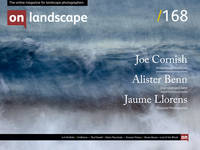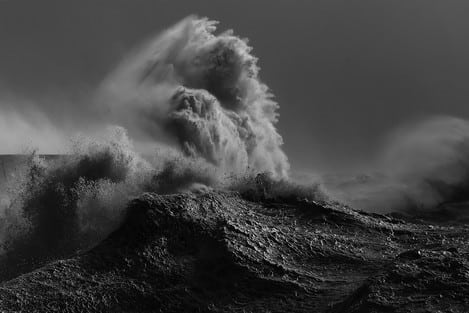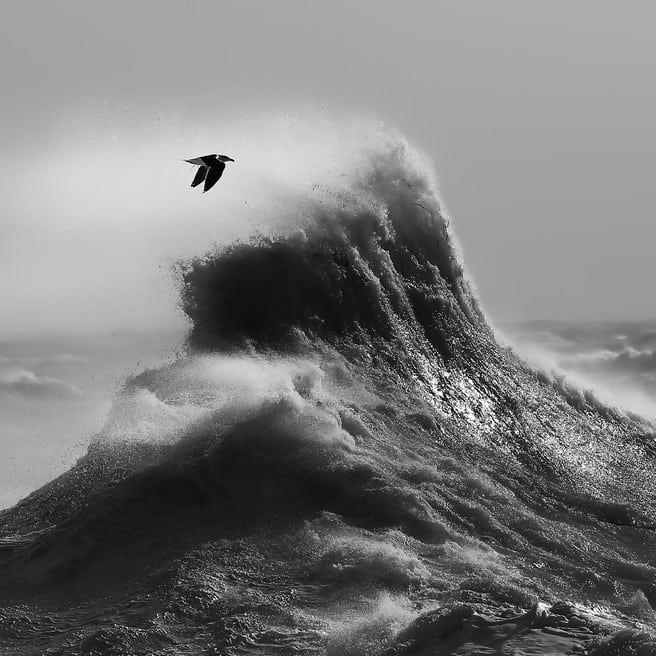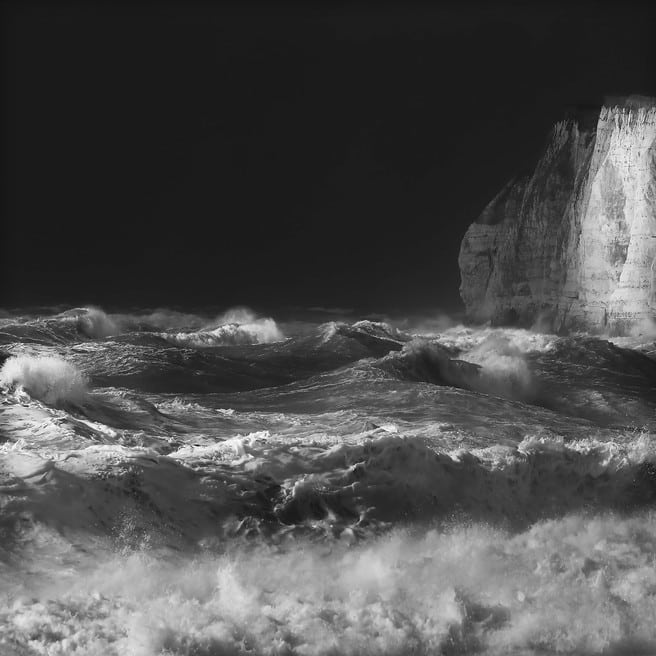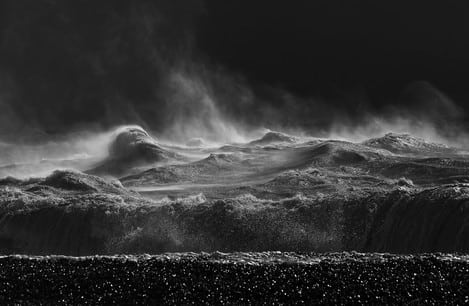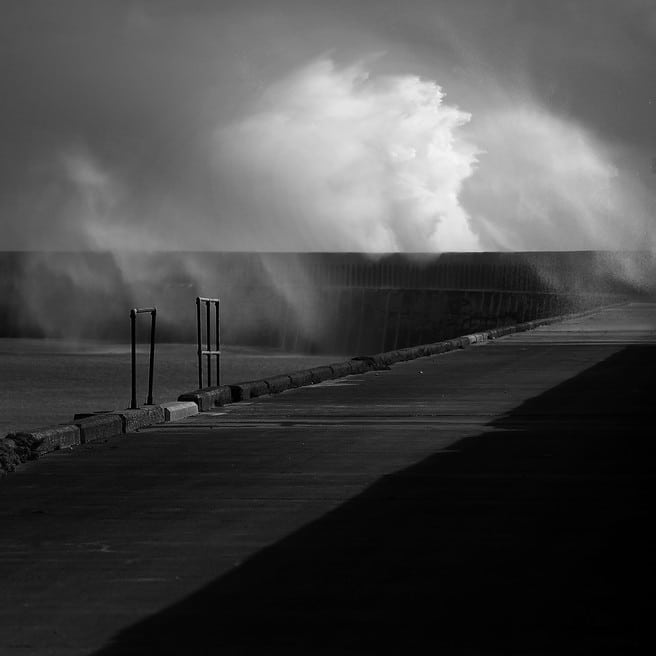Nothing regular or predictable

Beata Moore
Beata Moore is a professional photographer and author. Her work is diverse, from wider views to smaller details and abstract images, both in colour and black & white. She attained a postgraduate degree in botany and her photographs show a strong affinity towards the woodlands and the sea, but also a fascination with human ingenuity in creating architectural masterpieces.
A perfect storm by the Baltic Sea began - seagulls are tossed in the air like paper toys, yellow fishing boats are dwarfed by the waves, the wind is howling, stormy clouds are rolling in, and I can feel the first droplets of rain on my face. I am watching it all from a safe distance amidst the sand dunes. My bare legs are being repeatedly hit by the sharp marram grass and my hair is full of sand but I don’t mind…I am a bit frightened but fascinated and I want to know why and how the sea gets so angry. I have just learnt a new word, “Oceanography”. I am five years old.
Fast forward a few decades and yet again I am facing the angry sea. This time I am on the beach of Newhaven, Sussex. This small port town lies at the mouth of the River Ouse, on the coast of the English Channel, and is a ferry port for services to Dieppe in France. For photographers, this is “the place” for the waves, the really big waves, when hurricane-force winds merge with the high tide.
I promised myself that one day I would be taking images of the sea at its worst! The Newhaven breakwater draws crowds like a magnet during such storms. The cliffs behind the beach usually provide some protection from the elements, but not when the direction of the wind is from the south west. The western breakwater was constructed to arrest longshore drift and to cut off the supply of shingle to the spit. At the end of the breakwater, there is an imposing round white lighthouse made of cast iron. The breakwater in the past was very popular with fishermen and tourists. I wish I could walk the length of it to the lighthouse, but it is closed to the public as it is deemed to be unsafe. The beach within the breakwater is sandy, while the one on the western side of the breakwater is shingle. Walking on the shingle is reasonably easy, but walking there with the camera bag and a tripod when the shore is being lashed by gale force winds, is an arduous task.
While I appreciate that storms bring havoc to people’s lives, most photographers, me included, love them. I have a much greater understanding of waves and storms than when I was five-years old; waves are formed as a result of an interaction of the earth, moon and the sun. They are also formed by winds that create the motion of the sea. The waves generated away from the land in deep water intensify as they get closer to the shore. In shallow water, the lower part of the waves drags on the sea floor and forces the upper part to tilt forward and crash. That’s the scientific bit, but for me it is still all very magical. As in William Cullen Bryant poem “Hurricane”, I am dismayed, fearful yet spellbound by nature unleashing its forces.
Lord of the winds! I feel thee nigh,
I know thy breath in the burning sky!
And I wait, with a thrill in every vein,
For the coming of the hurricane!
And lo! on the wing of the heavy gales,
Through the boundless arch of heaven he sails;
Silent and slow, and terribly strong,
The mighty shadow is borne along,
Like the dark eternity to come;
While the world below, dismayed and dumb,
Through the calm of the thick hot atmosphere
Looks up at its gloomy folds with fear.
Nature churning seas into chaos, giant waves swelling up and engulfing Newhaven lighthouse and breakwater - all that fascinates me and creates perfect scenery for my photographs.
Powerful and beautiful, the waves are not easy to photograph, especially in heavy rain. There is nothing regular or predictable about them, and with no control over the sea, timing is everything. I concentrate on catching the decisive moment and including interesting shapes, textures and contrast into my composition. A glimmer of light breaking through the clouds, colliding breakers or a passing bird give the picture a strong focal point. Most of the images from my series “Sea Fury” are converted to black and white. I believe the classic noir approach best reflects the drama of the open water and its perpetual cycle of change.
Most photographers in stormy seas hold the camera by hand; I however use my tripod to steady my view on the scene. The tripod is important to me, as it eliminates the strain on my wrists, especially while using heavy zoom lenses. I use a fluid head though - just one lever enables quick movement of the camera in all directions and allows me to catch the decisive moment of the fleeting shapes of the waves. My favourite lens is 70-200mm zoom. My preferred aperture is f/9 as this ensures that more of the scene is in focus. The shutter speeds of 1/500 of a second and faster work well, but often I go as fast as 1/1000 or even 1/4000sec. Light during storms is notoriously unpredictable. The white crests of the waves make the camera think it is very bright so it occasionally under-exposes images. Even more challenging than the exposure is keeping the camera kit dry.
The best way to keep the lens dry in my experience, is to fit a deep lens hood and to use ultra-soft lens wipes from Specsavers or Boots followed by a quick wipe with a dry lens cloth. UV filter is useful to protect the lens from scratching and spray. Even though my camera is weather sealed, I protect it with an Optech camera waterproof cover.
There is no right or wrong place in Newhaven harbour to photograph from: up the hill from the distance - this ideal vantage point offers a wide and unobstructed field of view; closer to the shore allows for inclusion of the pebble beach into a shot and a lower perspective making the waves look more prominent; close to the breakwater entrance is perfect for including the now dilapidated and worn walls and watching struggling ferries entering the harbour, while standing further to the left, within the basin is perfect for photographing patterns that the swirling water creates.
During my trips to the coast, I never underestimate the power of the sea. Safety is very important to me, especially when dealing with extreme weather. Sometimes, overexcited by the spectacle in front of my eyes I get too close to the sea, but immediately step back reminding myself about the danger of the rogue waves. No picture is worth my life or anyone else’s. Let’s stay safe.

